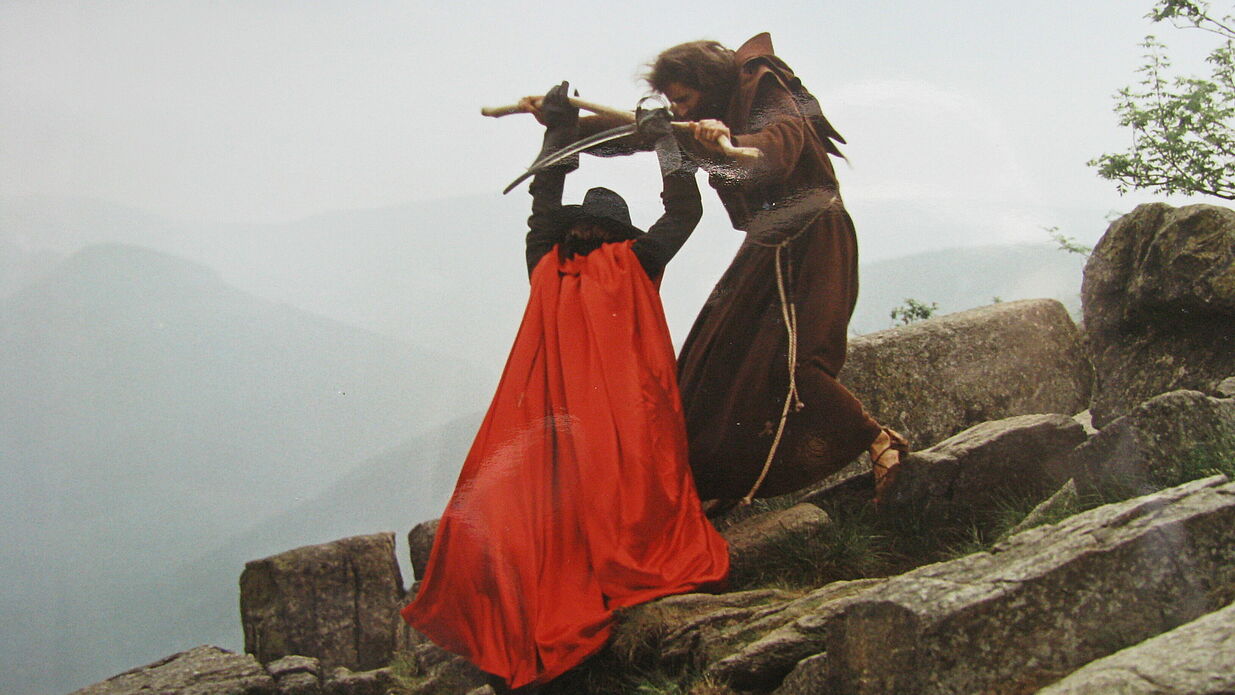Hoffmannesque
Tracing E.T.A. Hoffmann in Cinema

Gripping stories, the mystical and the strange, automata, horrible creatures and bizarre fantasy creatures meet saints and sinners. Anyone who loves the fantastic cannot ignore E.T.A. Hoffmann (1776-1822). He was a writer, composer, bandmaster, draughtsman and lawyer all in one. The whimsical, grotesque worlds and bizarre character creations of the Romantic form a veritable treasure trove for film: this is where horror meets thriller, fantasy meets comedy and opera meets dance. Ever since the pictures learned to move, filmmakers have been magically drawn to his visually powerful stories and grotesque characters.
The 200th anniversary of E.T.A. Hoffmann's death is on 25 June 2022. A good reason to search for the traces of the Hoffmannesque through over 100 years of living film history. The range of film adaptations shows the many possibilities of approaching his work cinematically and staging it.
"Hoffmann's personality, his fantastic writings literally cry out to be filmed," wrote Der Kinematograph in 1916. While some adaptations adhere closely to the originals, others proceed more freely with his material and adopt only individual characters and motifs. Ernst Lubitsch, for example, recognised the comic potential inherent in Hoffmann's characters when he cast cheeky Ossi Oswalda, in the title role of Die Puppe (1919). Unmistakably Hoffmannian characters such as the doll's wife Olympia, who today seems like a foreshadowing of artificial humans, or abysmal characters such as Coppelius from the story The Sandman inspire filmmakers to create a variety of new interpretations.
Especially the silent films The Student of Prague (1913) and Max Neufeld's The Tales of Hoffmann (1923) are enthusiastic about individual Hoffmannian motifs such as the magic glasses, the magic violin or the uncanny double. With the new technical and aesthetic possibilities, film was able to credibly present these illusions to an astonished audience at an early stage. These films have lost none of their fascination to this day.
But even an anti-hero like the criminal goldsmith Cardillac arouses the interest of filmmakers. Thus, he changes from a pathologically obsessed jeweller in Jewels (1930) to a complex character in Eugen York's The Young Woman of Scuderi (1955) and, as an artist personality driven to madness, serves as an identification figure for the 1968 movement in Edgar Reitz's Cardillac (1969). It is precisely the film versions based on one and the same material that invite us to comparative reading today. Ralf Kirsten's Die Elixiere des Teufels , for example, was released in 1973 as a joint production between the GDR and Czechoslovakia, and Manfred Purzer presented the west-German answer in 1976: East and West compete for the 'more successful' literary adaptation.
The film series invites you on a journey through Hoffmann's fantastic worlds and takes you from visually powerful silent films, which musicians bring to life live, to the time of German division and the post-reunification era.
"Hoffmannesque. Tracing E.T.A. Hoffmann in Cinema" is a collaboration with the team of the E.T.A. Hoffmann Portal of the Staatsbibliothek zu Berlin and is curated by Anett Werner-Burgmann.